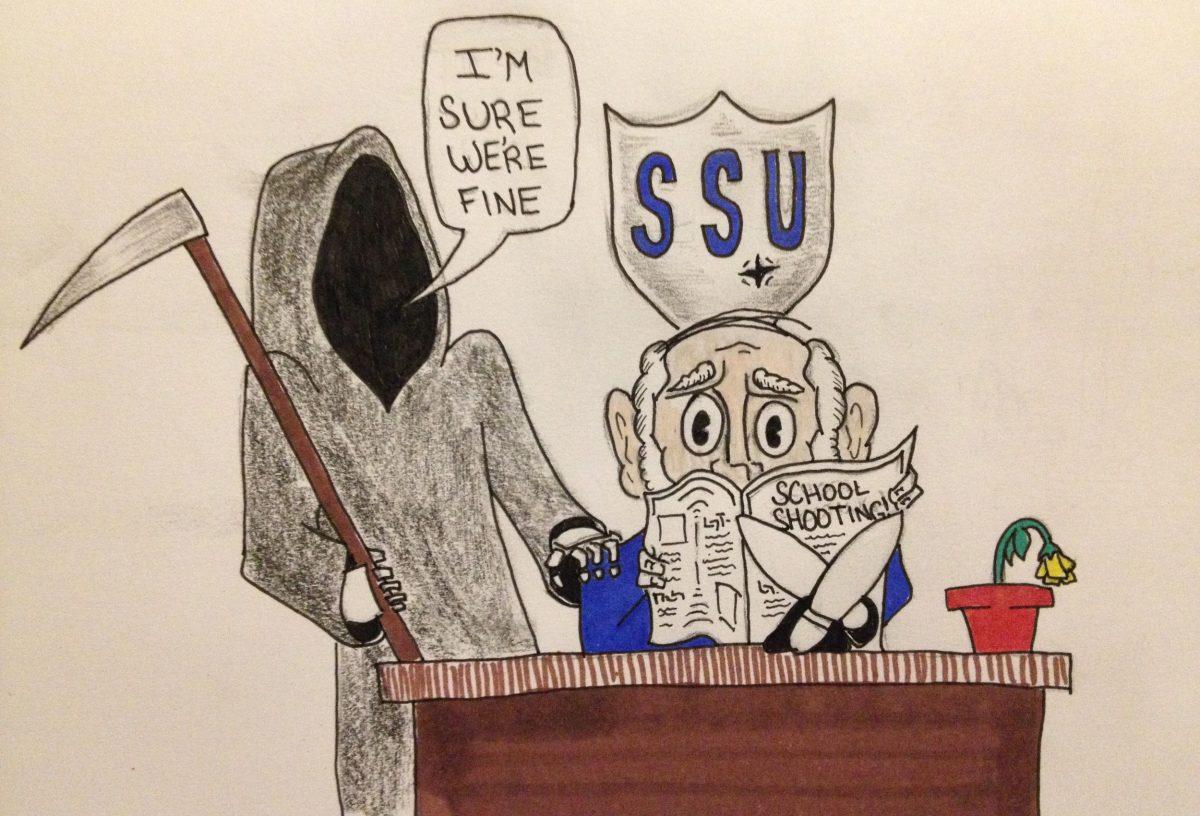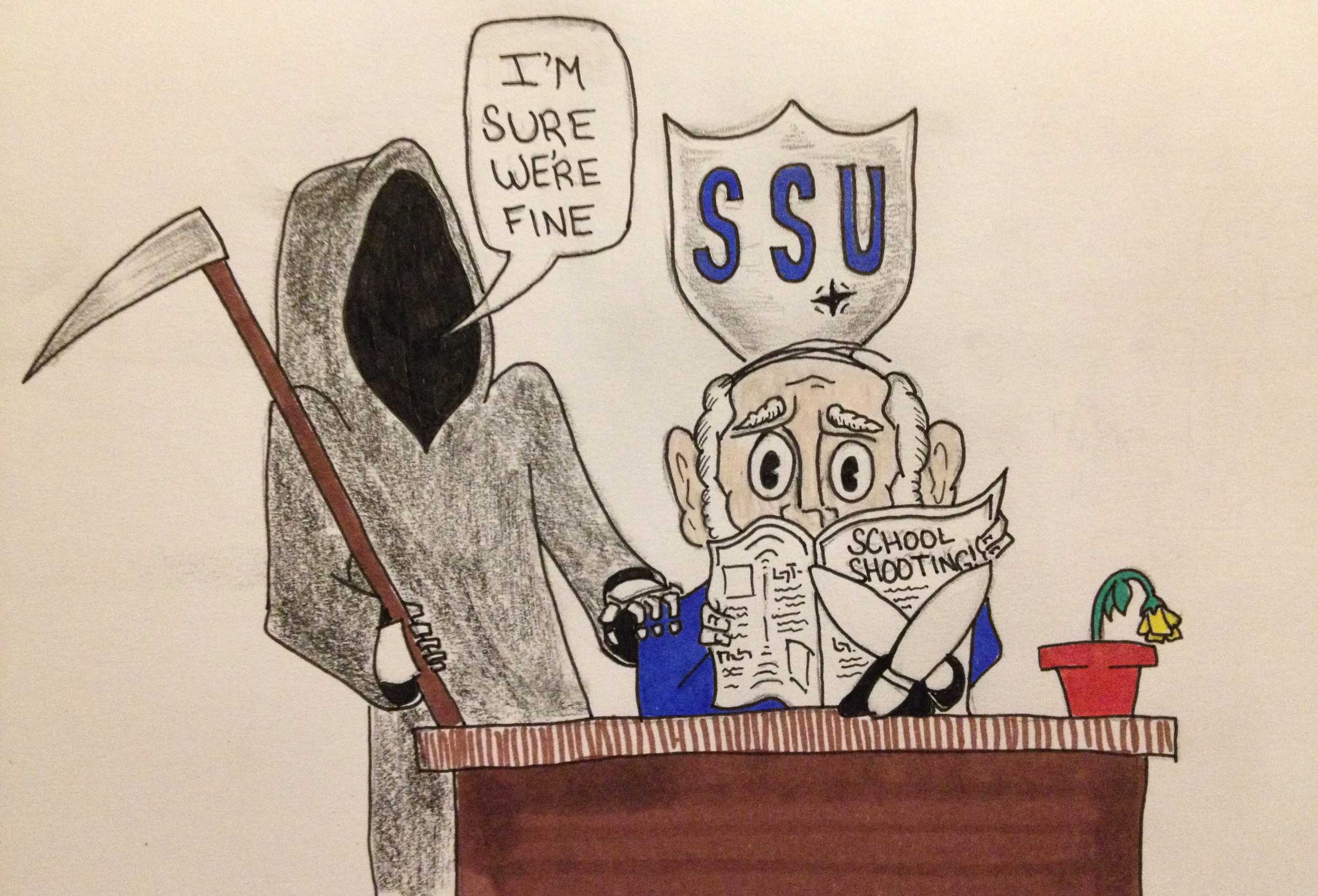Every college student thinks they’re invincible. Or rather, everyone thinks that every college student thinks they’re invincible. It’s not true either way, but we have to admit that sometimes we act like it is. Many of us don’t wear helmets when we bike or skateboard around campus, are willing to expose ourselves to potential alcohol poisoning every weekend, and even break that illegal and constantly frowned upon habit of texting while driving.
Though these actions have their own safety risks and consequences, they’re personal lifestyle choices that people are free to change any time they’d like. But what happens when the safety lies out of our control?
The recent fixation on mass gun violence has been ever prevalent in the media, with many of the incidents occurring on school campuses. The Sandy Hook tragedy was arguably the most shocking, but it doesn’t stand alone: there have been 45 cases of gun violence at schools in the United States since 2010, resulting in 73 deaths.
If Sonoma State ever encounters gun violence, how are we supposed to act and how will we be informed?
Police Services implements the Jeanne Clery Act, a federal law that requires universities to disclose timely information and warnings about campus crime and security policies. Every year students are notified of an Annual Security Report, and we also have access to Police Service’s daily crime log online. As far as warnings go, the Police Services website includes many methods to communicate emergencies: emails, emergency vehicles with PA systems, bullhorns, phone calls and text messages.
But Police Services also acknowledges that the university has no formal policy on timely alerts. Given recent events, we think it’s about time that the university develops one.
Emergency situations such as an armed gunman come from out of nowhere, but need immediate attention. The university implements fire drills every so often, but most students would have no idea what to in cases of a shooter, earthquake or any other on-campus emergency.
On Dec. 12, 2012, the SSU Emergency Services Program had an “Emergency Operations Center emergency team exercise” that attempted to cover shootings, but this event inconveniently fell during finals week, when many students were studying or had returned home.
Our timely warning system needs to be carefully examined, too. When the campus bookstore was robbed on Dec. 19, 2011 at 6:10 p.m., an email alert wasn’t sent out until nearly four hours later. Two warnings were sent out in September 2012 and February 2013 regarding vehicle thefts, but both were not sent until days after the incidents – the latter warning summarized that seven thefts had occurred within less than a week.
Just last night, a power outage at UC Berkeley caused an explosion that resulted in an evacuation. Unforeseeable events happen, and we should be prepared to respond in every situation.
We may not be in high school anymore, but it would be wise for us to implement a universal Code Red drill for students to be prepared in any case of emergency. All we want is for our campus to be safe; with modern technology and knowledge of national incidents, we can seriously improve the effectiveness of our emergency system.





![[Both photos courtesy of sonoma.edu]
Ming-Ting Mike Lee stepped in as the new SSU president following Sakakis resignation in July 2022](https://sonomastatestar.com/wp-content/uploads/2024/04/CC4520AB-22A7-41B2-9F6F-2A2D5F76A28C-1200x1200.jpeg)



























